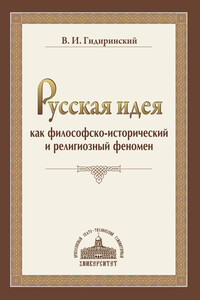Child-rearing values: across-national study. N. Y., 1979.
Lee Y. T., Seligman M. E. P. Are Americans more optimistic than Chinese? // Personality and Social Psychology Bulletin. 1997. Vol. 23. P. 32-40.
Leung K., Bond M.H., Carment D.W., Krishnan L., Liebrand W.B. Effects of cultural femininity on preference for methods of conflict processing: A cross- cultural study // Journal of Experimental Social Psychology. 1990. Vol. 26. P. 373-388.
Leung K., Chan D. Management across cultures // Psychology and cultural context. Thousand Oaks (CA), 1999. P. 177-188.
Liebkind K. Acculturation // Blackwell, handbook of social psychology: Intergroup processes. Maiden (MA), 2003. P. 386-406.
Liem R. Shame and guilt among first- and second-generation Asian Americans and European Americans //J. of Cross-Cultural Psychology. 1997. Vol. 28. P. 365-392.
Maass A., Ceccarelli R., Rudin S. Linguistic intergroup bias: evidence for in- group-protective motivation //J. of Personality and Social Psychology. 1996. Vol.71. P. 512-526.
Macrae C. N., Milne A. B., Bodenhausen G. V. Stereotypes as energy-saving devices: A peek inside the cognitive toolbox // J. of Personality and Social Psychology. 1994. Vol. 66. P. 37-47.
Madon S., Guill M., Aboufadel K., Jussim L. Ethnic and national stereotypes: The Princeton trilogy revisited and revised // Personality and Social Psychology Bulletin. 2001. Vol. 27. P. 996-1010.
Makine A. Le testament francais. Paris, 1995.
Marin G. Attributions for tardiness among Chilean and United States students // J. of Social Psychology. 1987. Vol. 127. P. 69-75.
Markus H. R., Kitayama S. The cultural psychology of personality // J. of Cross-Cultural Psychology. 1998. Vol. 29. P. 63-87.
Markus H.R., Lin L.R. Conflictways: Cultural diversity in the meanings and practices of conflict // Cultural divides. N.Y., 1998. P. 302-333.
Marsella A. J. Depressive experience and disorder across cultures // Handbook of cross-cultural psychology. Vol. 6: Psychopathology. Boston, 1980. P. 237— 289.
Matsuda N. Strong, quasi-, and weak conformity among Japanese in the modified Ash procedure//J. of Cross-Cultural Psychology. 1985. Vol. 16. P. 83-97.
Matsumoto D. Culture and psychology. Pacific Grove (Cal.), 1996.
Mlicki P. P., Ellemers N. Being different or being better? National stereotypes and identifications of Polish and Dutch students // European J. of Social Psychology. 1996. Vol. 26. P. 97-114.
Moghaddam F. M., Taylor D. M., Wright S. C. Social psychology in cross-cultural perspective. N. Y., 1993.
Moscovici S. The conspiracy mentality // Changing conceptions of conspiracy. N.Y., 1987. P. 151-169.
Moscovici S. Social representations. Explorations in social psychologv. Cambridge, 2000.
Murphy H. B. M. Culture and schizophrenia // Culture and psvchopathology. Baltimore, 1982. P. 221-250.
NaumovA. I., Puffer S. M. Measuring Russian culture using Hofstede's dimensions //Applied Psychology: An International Review. 2000. Vol. 49. P. 709-718.
Nolan M. A., Haslam S. A., Spears R., Oakes P. J. An examination of resource- based and fit-based theories of stereotyping under cognitive load and fit // European J. of Social Psychology. 1999. Vol. 29. P. 641-663.
Ocampo K. A., Bernal M. E., Knight G. P. Gender, race, and ethnicity: the sequencing of social constancies // Ethnic identity: Formation and transmission among Hispanics and other minorities. Albany, 1993. P. 11—30.
Osgood C. E., May W.t Miron M. Cross-cultural universals of affective meaning. Urbana, 1975.
Peabody D. National characteristics. Cambridge, 1985.
Pearson V.M., Stephan W.G. Preferences for styles of negotiation: A comparison of Brazil and the U.S. // International J. of Intercultural Relations. 1998. Vol. 22. P. 67-83.
Pepitone A. Lessons from the history of social psychology // American Psychologist. 1981. Vol. 36. P. 972-975.
Pepitone A., Triandis H. C. On the universality of social psychological theories // J. of Cross-Cultural Psychology. 1987. Vol. 18. P. 471-498.
Perrin S., Spencer C. P. The Ash effect — A child of its time? // Bulletin of British Psychological Society. 1980. Vol. 32. P. 405-406.



